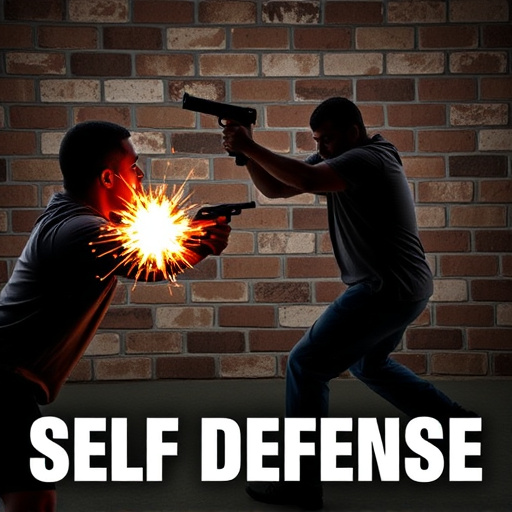Proper storage and understanding pepper spray's shelf life (up to 3 years) are crucial for maintaining effectiveness and legality. Store in cool, dry places away from sunlight and heat, keep out of reach of children, and regularly inspect for signs of damage or degradation, discarding weakened sprays. Follow manufacturer guidelines for optimal potency and reliability in self-defense situations.
“In today’s world, civilian protection is a crucial consideration. One effective tool gaining popularity among individuals seeking self-defense options is pepper spray. This article explores an essential aspect of personal safety: defensive spray for civilians. We’ll delve into the science behind pepper spray, dissecting its active ingredients and effects. Additionally, we’ll navigate legal considerations, provide storage and safety guidelines for optimal effectiveness, and discuss deciding on shelf life to ensure your spray remains a reliable defense.”
- Understanding Pepper Spray: Active Ingredients and Effects
- Legal Considerations for Civilian Use of Pepper Spray
- Storage and Safety Guidelines for Optimal Effectiveness
- Deciding on Shelf Life: When to Replace Your Spray
Understanding Pepper Spray: Active Ingredients and Effects
Pepper spray, also known as oleoresin capsicum (OC) spray, is a non-lethal self-defense tool designed to temporarily incapacitate an aggressor. Understanding its active ingredients and effects is crucial for civilian protection. The primary active ingredient in pepper spray is capsaicin, a chemical derived from chili peppers. When sprayed, capsaicin irritates the eyes, nose, throat, and skin, causing the target to experience temporary blindness, coughing, and difficulty breathing. This sensation can last for several minutes, providing users with enough time to escape or seek help.
In terms of Pepper Spray Storage and Shelf Life, proper handling is essential to maintain its effectiveness. Pepper spray should be stored in a cool, dry place, away from direct sunlight and heat sources. Most pepper sprays have a shelf life of up to 3 years when stored correctly, but this can vary based on the manufacturer’s guidelines. Regular testing is recommended to ensure the spray remains potent and ready for use when needed.
Legal Considerations for Civilian Use of Pepper Spray
The civilian use of pepper spray is governed by a complex web of laws and regulations, which vary significantly from one jurisdiction to another. Before considering its acquisition and deployment, individuals must understand the legal landscape surrounding this self-defense tool. Many regions have strict rules about who can own and carry pepper spray, as well as where and how it can be used.
Legal considerations also encompass issues of consent, reasonable force, and public safety. For instance, pepper spray is generally prohibited in certain public places like schools, workplaces, or events where large gatherings are expected. Additionally, the proper storage and shelf life of pepper spray are crucial factors that users must consider to ensure its effectiveness and legal usability. Proper storage involves keeping it out of reach of children and pets, away from direct sunlight, heat sources, and other chemicals, while adhering to recommended shelf lives to guarantee optimal potency.
Storage and Safety Guidelines for Optimal Effectiveness
Proper storage and safety guidelines are essential for maintaining the optimal effectiveness of pepper spray, ensuring its longevity and potency. It should be stored in a cool, dry place, away from direct sunlight and heat sources. Temperatures above 120°F (49°C) can degrade the active ingredients, reducing its effectiveness. Keep it out of reach of children and unauthorized individuals to prevent accidental use or misuse.
When stored correctly, pepper spray typically has a shelf life of up to 3 years. However, this can vary based on factors like manufacturing quality and storage conditions. Regularly check for any signs of deterioration, such as changes in color, odor, or texture, which may indicate spoilage. Discard the spray if it appears damaged or if its potency seems diminished, ensuring you replace it with a fresh unit for maximum protection.
Deciding on Shelf Life: When to Replace Your Spray
When considering pepper spray for civilian protection, understanding its shelf life is crucial for ensuring its effectiveness when it matters most. The storage and shelf life of pepper spray vary based on factors like brand, active ingredients, and manufacturing quality. Generally, most pepper sprays can remain potent and reliable for up to 2-3 years if stored properly. However, this duration can be influenced by environmental conditions such as temperature and humidity. Extreme heat or prolonged exposure to direct sunlight can accelerate the breakdown of the spray’s chemical composition.
Regularly checking the expiration date or manufacturing recommendations is essential. After opening, pepper sprays typically have a shorter shelf life, ranging from 6 months to 1 year. Once opened, factors like frequent use, temperature fluctuations, and exposure to moisture can compromise its integrity. It’s advisable to replace your pepper spray after this period, as its potency might diminish, reducing its effectiveness as a self-defense tool. Always refer to the manufacturer’s guidelines for specific storage instructions and shelf life expectations.
Pepper spray is a powerful tool for civilian protection, but its effectiveness depends on proper storage and shelf life management. By understanding the active ingredients, legal considerations, and safety guidelines, you can ensure your pepper spray remains potent when needed most. Regularly check and replace expired sprays to maintain optimal protection, making it an essential addition to personal safety measures.
